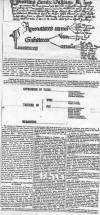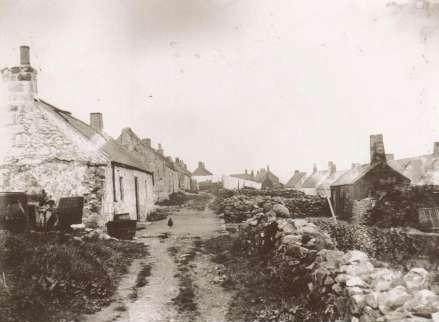
13th to 16th Century |
William De Camera - article.
We’ll take the story into the 1200’s where some literature and information was beginning to be written down and recorded in ledgers and journals for the first time.
One of the earliest written references to our area takes us back to 1281 AD when the Estate of Findon was under the ownership of Philip De Fyndon. The Estate of Findon was the largest and most important estate in our area at that time.
The surname De Fyndone or De Fyndon crops up a few times towards the end of the 13th and beginning of the 14th century. The first recorded spelling of the family name is shown to be that of the aforementioned Philip de Fyndon, which was dated 1281, in the Register of the Abbey of Aberbrothoc, during the reign of Alexander III of Scotland 'King of Scotland', 1249-1286. Surnames became necessary when governments introduced personal taxation so from this we can perhaps surmise that Philip De Fyndon took his surname from his estate and therefore the place name of Findon (Fyndon, Fyndone or Fyndoune) was in existence for many years prior to the arrival of Philip De Fyndon.
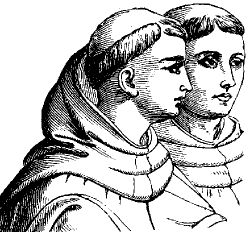 On 13th
April 1281 De Fyndon appeared before a Justiciary Court, held on the
moor of Nigg, for the settlement of a dispute as to the marches of Nigg
and Findon, which had arisen between himself and the Monks of Arbroath,
superiors of the lands of Nigg, and Thomas the son of the Thane of Cowie.
On 13th
April 1281 De Fyndon appeared before a Justiciary Court, held on the
moor of Nigg, for the settlement of a dispute as to the marches of Nigg
and Findon, which had arisen between himself and the Monks of Arbroath,
superiors of the lands of Nigg, and Thomas the son of the Thane of Cowie.
The Earl of Buchan, Alexander Cumyn, presided over this court and in attendance was Hugo, Bishop of Aberdeen and Sir Reginald Le Chen, Guardian of Moray as well as several other knights and landed proprietors. The dispute was settled amicably and appropriate boundaries were set in respect to the lands.
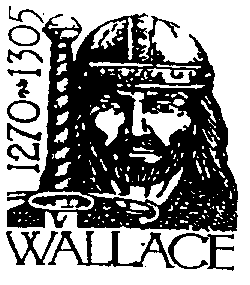 De
Fyndon appears to have favoured the English party over William Wallace
during Edward I’s attempts to subjugate Scotland in the latter part of
the 13th century and ultimately this preference was to later
cost him the Estate of Findon which was confiscated at some point after
Robert the Bruce came to power.
De
Fyndon appears to have favoured the English party over William Wallace
during Edward I’s attempts to subjugate Scotland in the latter part of
the 13th century and ultimately this preference was to later
cost him the Estate of Findon which was confiscated at some point after
Robert the Bruce came to power.
In 1319 the crown conferred an annual annuity arising from the rents of the estate of Findon upon a John Crab, a Flemish Engineer, mercenary, and sometimes pirate, who had distinguished himself through his skill and prowess by the side of the Scots at the siege of Berwick during that year. Crab’s descendant’s ended up owning extensive property around the Aberdeen area.
Findon
was converted into a Barony at an early period, and in 1359 William of
Keith, Sherriff of Kincardineshire took credit for the payment of £3 out
of the lands. By 1392 the Barony and Lands of Findon belonged to William
De Camera or Chalmers who was a Burgess of Aberdeen, and several times
provost between the years of 1392 and 1404. Chalmers was succeeded in
the proprietorship of Findon by his son William, who in 1420,
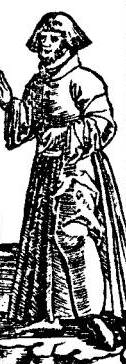 “sold to
Sir Alexander of Forbes, Lord of that Ilk, his right to the ward of heir
of the deceased Adam of Balkarne”.
“sold to
Sir Alexander of Forbes, Lord of that Ilk, his right to the ward of heir
of the deceased Adam of Balkarne”.
By 1441 the Barony of Findon was under the ownership of Richard Vaus, a grandson of the original Chalmers and in 1459 it was noted that he granted from the Lands of Balquharn an annual annuity of forty shillings to Lawrence Pyot, Archdeacon of Aberdeen. Vaus owned extensive lands in and around Aberdeen, including the lands of Menie in Belhelvie. I wonder if he saw their potential over 500 years before Donald Trump did!
In the middle of the fifteenth century the Lands of Portlethen were owned by David Menzies (part of the Menzies of Pitfodels family that held estates throughout the area for over 350 years, and which would later include the Barony of Findon). At around this time the English were demanding “forty thousand pounds of good and lawful money of England, to be paid in yearly sums of ten thousand marks till the whole was discharged” as a ransom for James I of Scotland who was being held captive in England. At that time Aberdeen, Edinburgh, Perth and Dundee were bound as security to the English for this sum of money and David Menzies, a person of great affluence and influence, was selected as a “hostage” for Aberdeen and as such spent some time in England.
From the late 15th century the Barony of Findon was in the hands of the Menzies of Pitfodels and they stayed in that family for many generations thereafter. One of those Menzies, Alexander son of the Provost of Aberdeen was to meet an untimely demise at the hands of Sir William Forbes, another local landowner in 1580. For more details of that dastardly deed please refer to “Twitcher’s Corner”. Check out the Peregrine Falcon!
